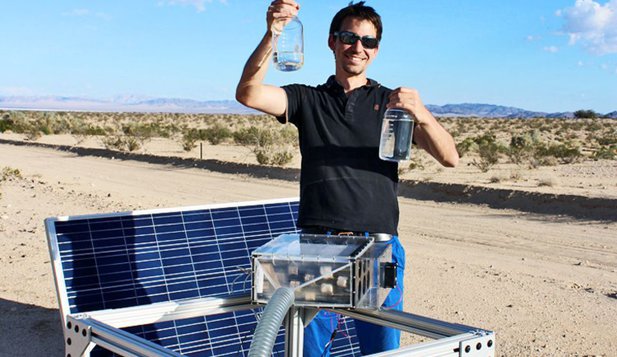The device that can absorb moisture from the desert air is produced by a start-up called Water Harvester Inc.
Water is one of the most important resources that our planet can provide, over 70% of the Earth’s surface is covered with water; however, most of it is saltwater that we cannot drink or use in our activities. The increasing pollution and the need for water make the rivers and groundwater more and more drained. Scientists have begun to look for other ways to get the water needed.
Such a device that can collect water from the atmosphere, even in low humidity conditions, such as those identified in the desert, was designed and built by Water Harvester Inc, a start-up owned by Omar Yaghi, a chemistry teacher and director of the Kavli Institute for Nanosciences at the University of California.
In an article in the ACS Central Science journal, Yaghi and colleagues describe how their water collector works. A device the size of a microwave oven that, when tested in the Mojave Desert, managed to produce 0.7 liters in a single day. The humidity in that region reaches a maximum of 7%.
“The device is not a dehumidifier, operating in the presence of high humidity. Some will say that 0.7 liters of water does not mean much, but when you have no water, it becomes very much,” said Omar Yoghi.
Currently, Water Harvester Inc. test these devices. Scientists estimate that, in higher humidity environments, they will be able to collect seven or even ten liters of water daily, a quantity of water that falls within the recommendations of scientists for water consumption: 3.7 liters of water daily for men and 2.7 liters for women.
“We produce ultra-purified water, which could be widely available, without the need to connect to water networks. This water mobility is critical for people facing water shortages and makes a much more important project possible – clean water becomes a human right,” said Omar Yaghi.
Scientists collaborating on this start-up are confident that larger versions of the device, which could be as large as a refrigerator, could produce 200-250 liters of water daily, a sufficient amount for what is needed to a household for cooking, drinking, and hygiene. In the future, much larger water collection plants, powered by sunlight, could produce even 20,000 liters of water daily.
Behind this efficiency are the metallic-organic frameworks (MOFs), their porous structure allowing the devices to collect water from the vicinity. To understand the porosity of this material, the researcher explains that a single gram has the surface of a football field. The first porous material that proved effective in capturing water was MOF-801, the internal surface allowing the collection and condensation of water even at room temperature.










